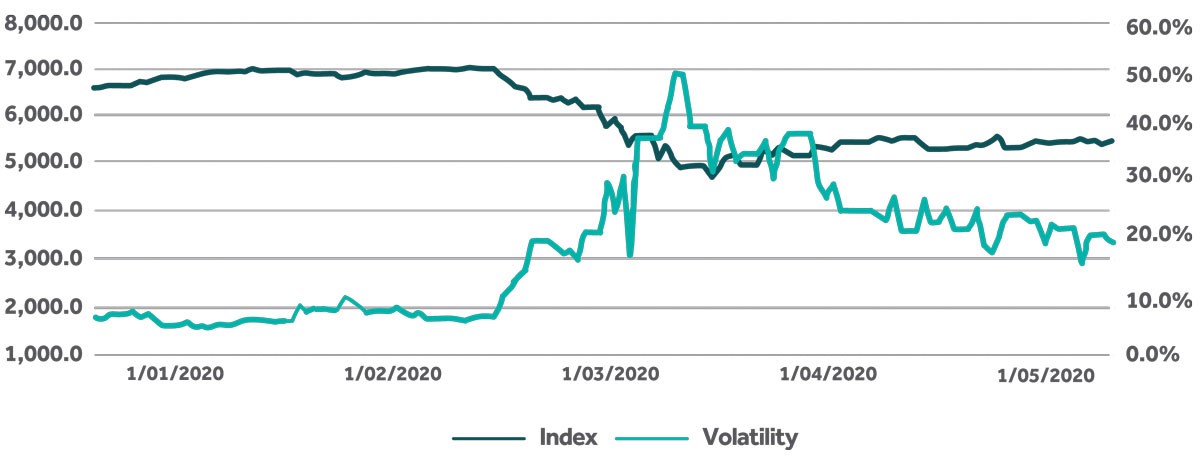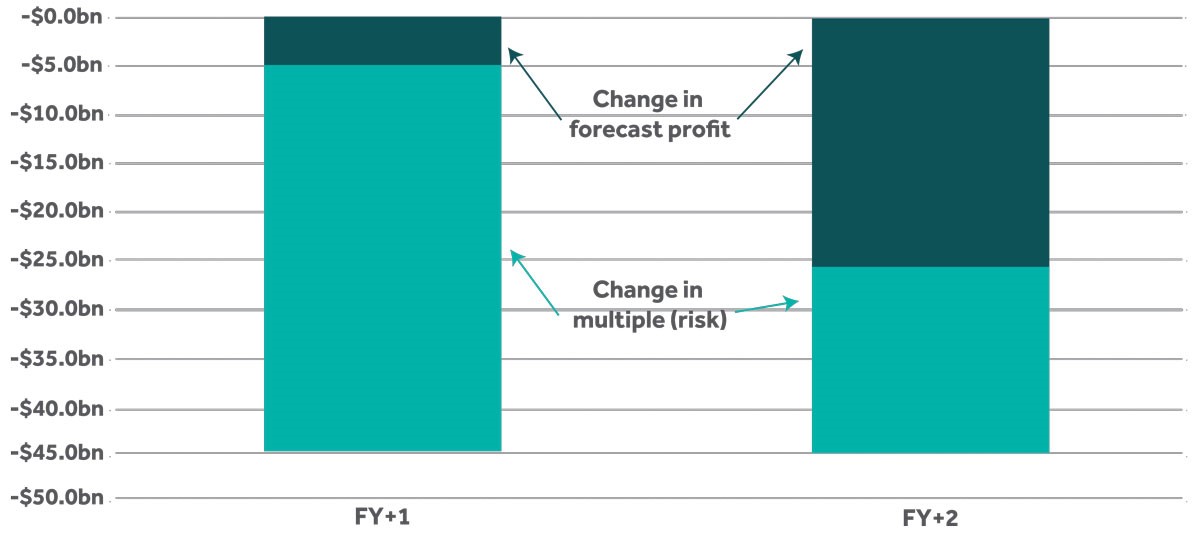We provide clients with many professional and technical services. For a detailed description, please select the relevant service.
Great
News
Jun 17, 2020 / News
The Impact of COVID-19 on Valuations

COVID-19 makes valuing businesses more challenging. As companies approach the current financial reporting period, those entities that are carrying intangible assets from acquisitions and/or recognise investments at fair value face the difficulty of valuing investments in these unusual circumstances. We discuss below some of the issues to consider when preparing a valuation in the current environment.
As can be seen in Chart 1, the market as a whole is struggling. When looking at the S&P ASX 200 index the impact can be seen from the end of February. The increased volatility also highlights the challenges being faced in trying to determine equity valuations at the moment.
Chart 1: S&P ASX 200 Index and Volatility

Source: S&P Capital IQ
Valuations reflect the expected future cash flow and the risk of those cash flows being received. The fall in value in the S&P ASX 200 reflects both a lower profit expectation and additional risk (see chart 2). An understanding of the reasons for the fall in value is needed to appropriately use market data when preparing valuations.
Chart 2: S&P S&P ASX 200 TEV change based on current financial estimates

Matters to consider for a discounted cash flow valuation
A discounted cash flow approach is at the core of all valuations. This approach looks at forecast cash flows and discounts the cash flows at an appropriate discount rate.
The main challenge with any discounted cash flow is to forecast the cash flows. In times of uncertainty this becomes even more difficult. However, reasonable estimates can usually be made of key risks for a business after some investigation and thought. The most appropriate way to consider the risk in forecasts is to look at the range of potential outcomes for the risks that have been identified. A weighting of these outcomes based on the estimated probability of their occurrence will mean that the risk is taken into account in the valuation. For example, the length of impact of current self-isolation measures is hard to estimate. Therefore you may want consider multiple scenarios as to the length of the impact and probability weight the outcomes to quantify the risk in a valuation.
A lot of discussion and focus is put on the discount rate applied. If the above analysis is not undertaken on the forecasts then an increase in the discount is usually applied. Theoretically if you were to determine an appropriate increase in the discount rate to quantify the risk it would be based on the discount rate needed to achieve the valuation determined from above when applied to a single forecast.
The discount rate to be applied reflects both the cost of equity and cost of debt and the mix of each in the capital structure. All of these are affected in the current environment.
Looking at the cost of equity, historical studies have shown the market risk premium, the return required above a risk-free rate, for large listed companies is around 6-8% over the long term. There has been a move to lower premiums in many valuations in recent years. Given the current market conditions it is likely the higher end of this range is more appropriate.
Interest rates are currently at an all-time low. This increases a valuation under a discounted cash flow approach as both the risk-free rate, usually based on government bond rates, and borrowing rates are low. Consideration needs to be given to the sustainability of any interest rate assumptions, particularly if there is a short-term reduction as part of COVID-19 measures – more on incentives below.
Lastly at the valuation date the actual level of debt may be higher than normal as short-term funding is in place. Considering a target debt to equity ratio either based on future plans or historical trends may be a more appropriate assumption.
Matters for capitalisation of earnings approach
A capitalisation of earnings approach picks a single view of underlying earnings with the risk attached to the earnings reflected in the capitalisation multiple applied. Making sure that the earnings period used and the multiple applied reflect the same issues is a challenge at the current time.
Underlying earnings used in a valuation is usually based on the most recent financial information available at the time of the valuation. Compared to this available market comparisons are for the most part based on the last twelve months trading to December 2020. Before COVID-19 significantly impacted performance.
If you miss-match financial information and the multiple applied due to the above, the value will be lower than appropriate as some of the trading decline is in the financial information and is also included in the multiple based on financial trading prior to COVID-19. This is a double counting of the impact of falling profits in the valuation.
To get around this issue, forward earnings and related multiples will need to be considered in the context of any valuation over this period. This adds difficulties around the availability of appropriate data for peer companies and that multiples implied from past transactions are based on information prior to COVID-19.
Potential specific adjustments
Any specific adjustment to a valuation for COVID-19 needs to take into account the industry in which the business is operating, the fundamentals of how the valuation is put together and the related risks included.
We have considered a number of ways to determine the adjustment required if the impact of COVID-19 is not otherwise included in the forecast or underlying profitability. Approaches included considering the:
- movement in multiples;
- changes in the correlation of equity movements to the overall market in the six months prior to COVID-19 and as of now. An increase indicating a higher risk; and
- implied increase in an option due to the increase in volatility.
Based on these approaches we have estimated that the increased risk associated with COVID-19 is a 5-15% discount on multiples and 100 to 250 basis point increase in the cost of equity for smaller, unlisted companies. For fear of repeating ourselves how this is applied to any valuation needs to ensure that the risk is not double counted.
How to treat incentives received
When looking at a valuation at the current time there are also short term impacts from incentives received that need to be considered. These may be government incentives such as JobKeeper and PAYG rebates, bank incentives from debt deferral or interest reductions and holidays or expense deferral such as rent deferrals.
The first consideration is whether or not these are relevant or still applicable for the purposes of the valuation. Assuming that they are then these incentives should be separately considered as a surplus asset.
In the short term and particularly for this financial year, there is a high chance that risks will be double counted or missed in valuations and a robust understanding of valuation approaches and the how information being used relates to the valuation approach is important to ensure a reasonable value is determined. Greater care is needed when undertaking a valuation in the current climate to ensure that you do not reach erroneous conclusions.
How can Nexia Edwards Marshall help you?
If you have any questions about this article or are interested in finding out more about how our advisory team can assist you with valuations, please contact Hugh McPharlin or your Nexia Edwards Marshall Advisor.
The material contained in this publication is for general information purposes only and does not constitute professional advice or recommendation from Nexia Edwards Marshall. Regarding any situation or circumstance, specific professional advice should be sought on any particular matter by contacting your Nexia Edwards Marshall Adviser.

